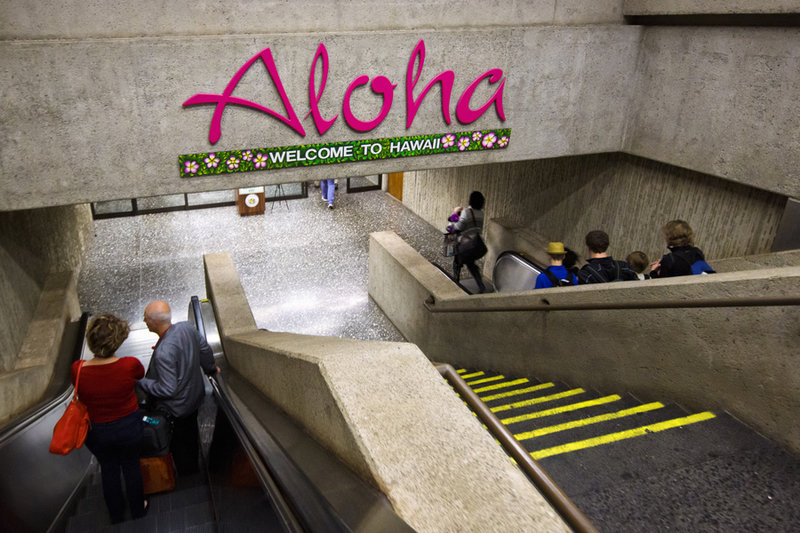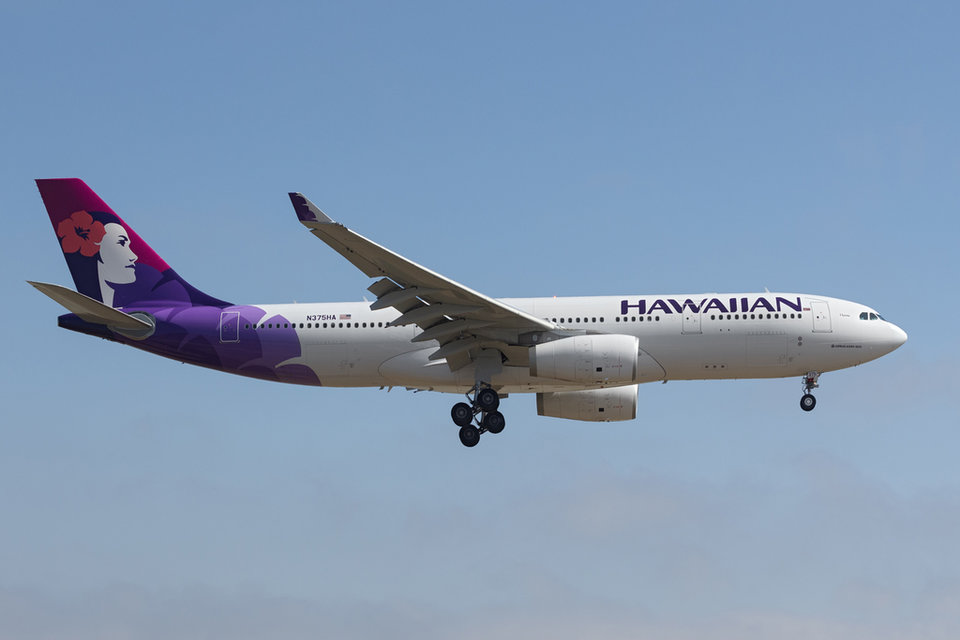Regulation
Trouble in paradise: does Hawaii need a new airports authority?
The
future
of US air
traffic control:
the third option?
Airports in the US island state are in need of some attention but efforts to resolve the crisis are being hampered by politics. Andrew Tunnicliffe talks with State Senator Lorraine R. Inouye about her attempts to address the issues and the damage inaction is causing
It’s a political saga that has been years in the making. However, unlike the fast-paced, dramatic storytelling of TV shows like The West Wing or House of Cards, this story is one of delay and stagnation.
Hawaii’s seven commercial airports are in disrepair, and so too are the other eight major airports servicing the island state. At least, that’s the argument put forward by some in the state’s aviation industry and senior politicians. In 2017 Blaine Miyasato, co-chair of the Airlines Committee of Hawaii and Vice President of Customer Service at Hawaiian Airlines, spoke of moving walkways that don't work, bathrooms in desperate need of repair, and the Wiki Wiki bus experience, which he said left a lot to be desired.
In June, United Airlines chief executive Oscar Monzo warned of the dangers facing Hawaii’s airports if these issues weren’t addressed. On a tour of Honolulu’s Daniel K. Inouye International Airport, known for its ageing appearance, he said: “I hate to be over dramatic but we’ve got to fix this. This is the jewel of this island. People love coming here and we’ve got to have an airport that represents it.”
Such concerns are justified by the number of passengers passing through; almost 10 million people flew into and out of the state in 2018 – another record-breaking year – according to the Hawaiian Tourism Authority. They brought with them almost $18bn in spending and added more than $2bn to state tax coffers - significant figures that cannot be ignored.
Image courtesy of
A lack of authority
Said to be the most isolated population centre in the world, air travel is vital to Hawaii. “As an island state, we are completely dependent on our airports,” says Hawaii State Senator Lorraine R. Inouye. She is a long-time proponent of efforts to restructure the way the islands’ airports are operated.
“Our ability to plan and respond effectively to the many challenges we find in air transportation and infrastructure have been hampered by our lack of one central authority,” she says. For years now, her and colleagues attempts to address the issue have been hit with delays. State legislative bills have been proposed each year since 2016 but have ultimately failed to pass through the legislative programme.
In its most recent iteration, Senate Bill 666 failed again despite widespread support. The bill, had it passed, would have seen an airports corporation established, taking responsibility for the islands’ commercial airports from Hawaii’s Department of Transportation (DOT).
“Currently, the responsibility of development, management, operation, and maintenance of all of the state’s airports is distributed amongst several state agencies,” says Inouye. “This creates unnecessary delays in projects and restricts the airport system from keeping up to the standards of other leading global destinations.”

Image courtesy of cleanfotos / Shutterstock.com
Changing the way the islands’ airports are managed would bring significant advantages, according to supporters. In a testimony to the state’s Senate Committee on Transport representing Hawaiian Airlines – the state’s largest commercial carrier – Miyasato said airlines currently fund airport works through money provided to the DOT’s Airports division. “Improvement plans are drawn up… and advanced through departmental plans as part of the governor’s budget,” he said. “This makes the appointed director of the state DOT the de-facto head of the airports and leaves long-term airport improvement plans vulnerable to change with each four-year election cycle."
He argued that when plans are confirmed, often construction can be delayed due to the need for the legislature to agree to any appropriation adjustments to the project. “Under the current system, once the state legislature has adjourned sine die, such adjustments must wait to be taken up the following session. An airport authority would allow the state to approve lump-sum annual appropriations from the user fee airport fund, providing the corporation with the ability to make necessary adjustments between legislative sessions. This will keep schedules and costs on track."
Eero Knuutila is Head of Service Development at Helsinki Airport.
Image courtesy: Helsinki Airport
Our ability to respond effectively to many challenges have been hampered by our lack of one central authority
Exploring the airport corporation model
Inouye agrees, saying: ‘An independent corporation would allow for quicker decision-making and a streamlined process for budgeting and procurement.” She adds that the airport corporation would be headed by a chief executive and board comprising at least one resident from each county and two members appointed by the governor.
“The CEO shall direct and supervise the corporation's administrative and operational affairs in accordance with the directives of the board. The board would take over management of all seven of the state’s commercial airports. Their responsibilities include developing an organisation and management structure to best accomplish the goals of the Hawaii airport system, including establishing performance targets and performance standards for all state airports to achieve the highest levels of customer service.”
It's a move that has the backing of airline chiefs, many testifying in its favour, and even the DOT. “We have worked diligently with the airlines and the Hawaii DOT Airports division to create a bill that is amenable to everyone,” Inouye continues. “Hawaii is one of only three states in the nation where airports are still managed by the state government — and it shows.”

Image courtesy of Sandra Foyt / Shutterstock.com
There is clear appetite for transformation, so why has the bill failed to pass for four consecutive years? It’s simple, says Inouye: “Politics killed the bill; in particular, a dispute about how the bill would exempt the airport corporation from the state’s procurement code.”
It’s been a long-standing cause of contention for this and previous bills. “Many parties who supported the bill’s intent opposed the exemption from the procurement code, on the grounds that it requires contractors to list their subcontractors, which offers a level of protection against businesses farming low-bid work to subcontractors for profit,” Inouye said. However, this time of asking changes were made during the committee stage to address these concerns.
Hawaii is one of only three states in the nation where airports are still managed by the state government
Rapid aviation growth: can Hawaii’s airports cope?
It’s clear Hawaii has some considerable issues to address, and it needs to act quickly. The state’s aviation sector is growing, with more routes being opened and more players looking to take advantage. In early 2019, Southwest Airlines began operating flights between California, Honolulu and Kahului. United Airlines also expanded its local operations to help meet growing demand a few years earlier.
Saying the bill took into account the concerns of the industry about the state of the islands’ airports, Inouye adds: “I, along with many others, believe that an airport authority in Hawaii is a step forward in fixing our airports… The airports are the first and last thing travellers see when they visit the islands. We need to make the airports a place of Aloha.”

Image courtesy of Angel DiBilio / Shutterstock.com
Whilst, in this case, politics isn’t as ‘sexy’ as political drama script writers would have you believe, the power of political decision, and indecision, can impact everyone, whether they’re native to the island or simply visiting for the shortest times.
Inouye has indicated she’ll be making a similar proposal again, but whether the state gets the airport authority many believe it needs, at the fifth time of asking, remains to be seen.
Eero Knuutila is Head of Service Development at Helsinki Airport.
Image courtesy: Helsinki Airport
The state’s aviation sector is growing, with more routes being opened